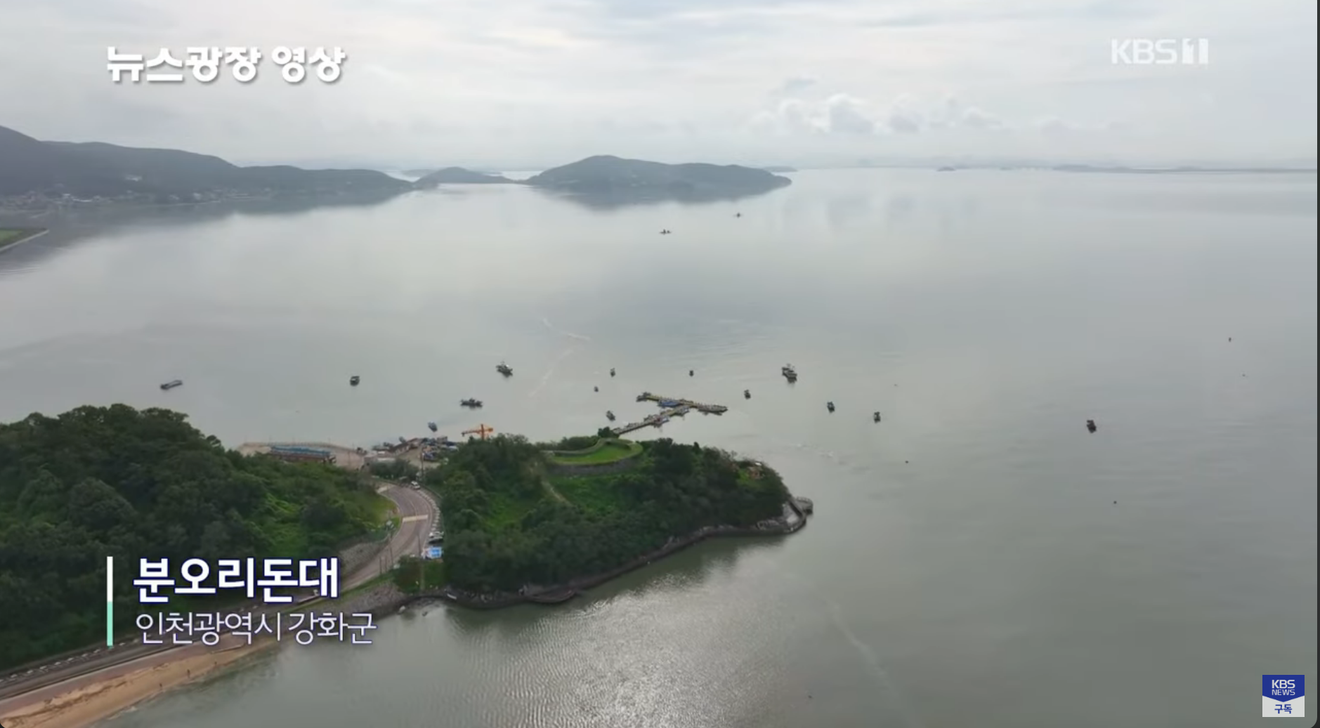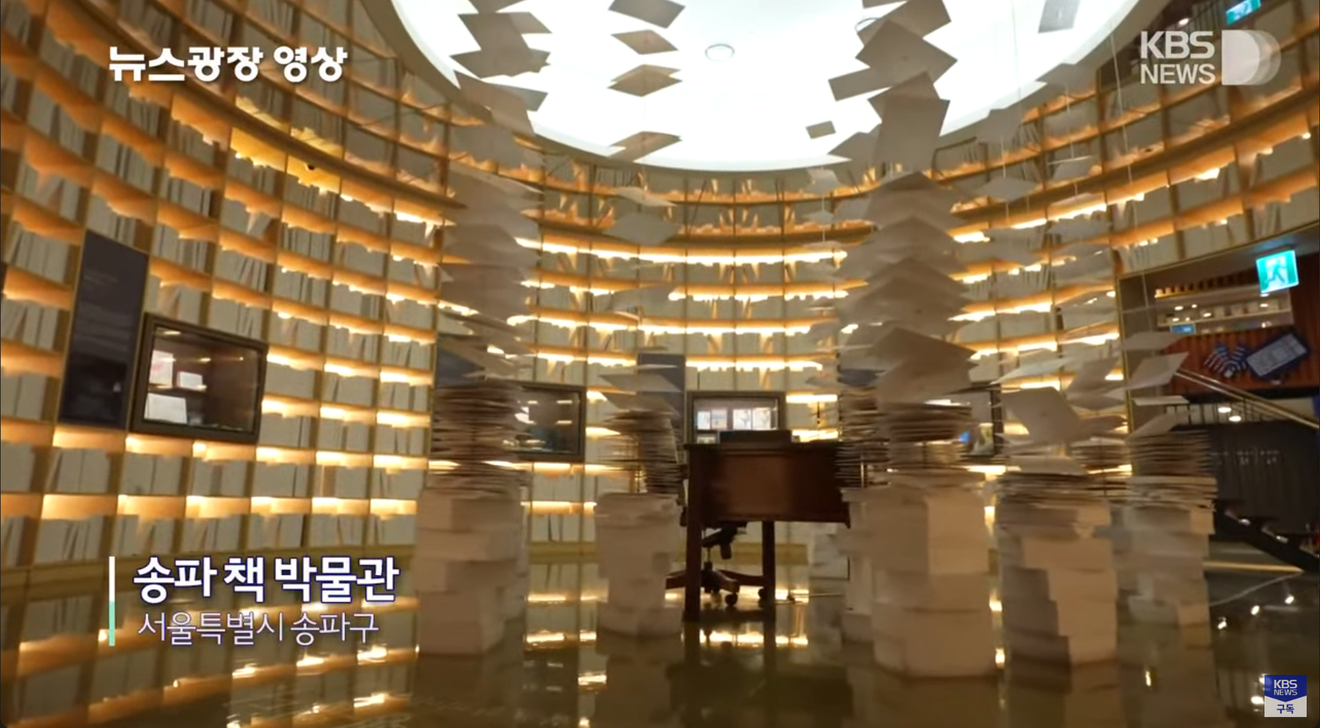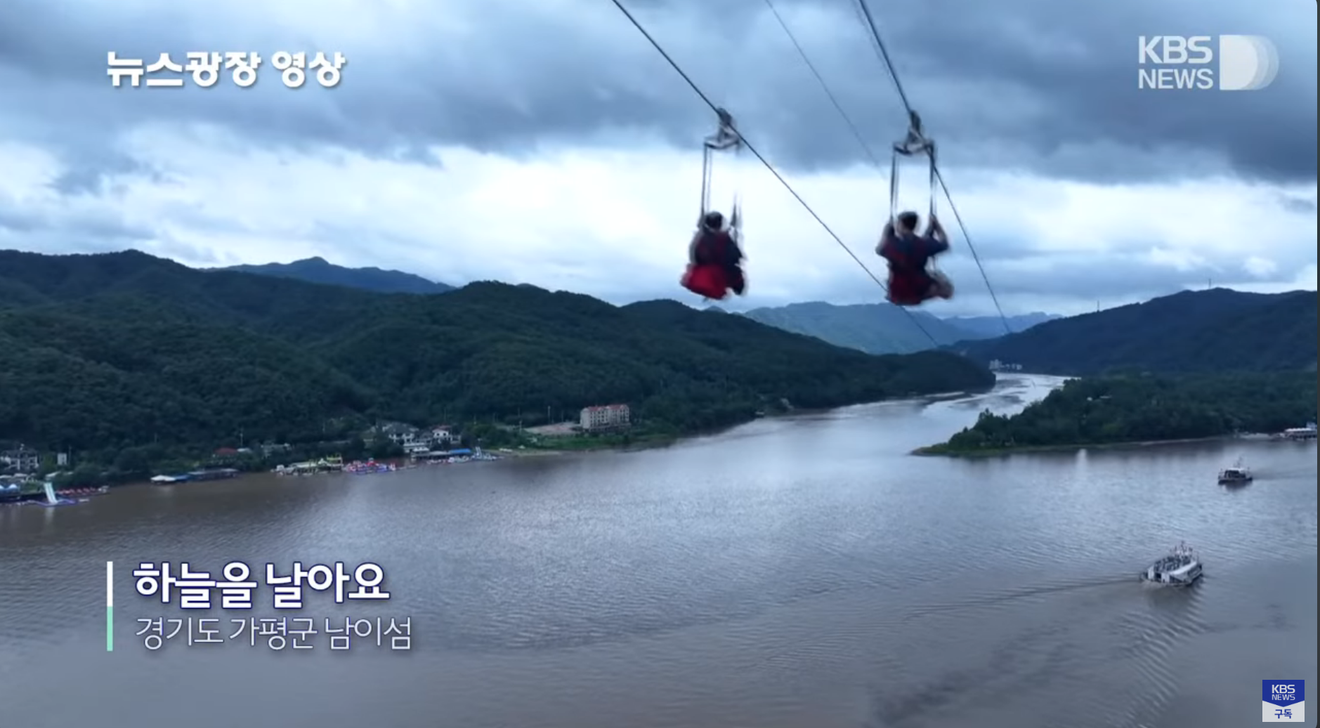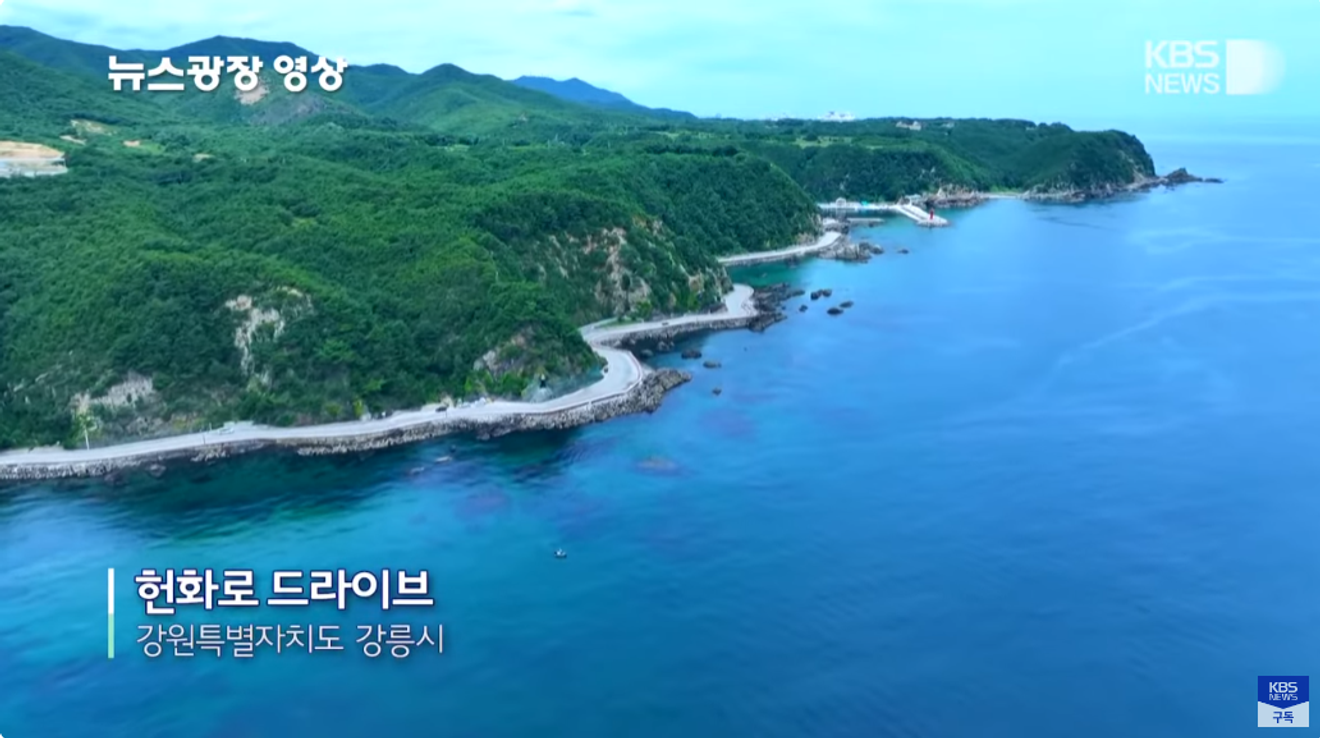- 송파 책박물관
KBS News Plaza video for the first week of August focused on showcasing places where you can see the refreshing seaside. 🏖️
Especially, Songpa Book Museum is a place I didn't know about until now, so I plan to visit there sometime.

Source: KBS
Buno-ri Dondae
Dondae are small-scale observation and defense facilities built along the coast or in border areas.
Soldiers stand guard inside the dondae, watching for enemy invasions and any suspicious activity, and taking countermeasures.
When the enemy invades, they also fight a defensive battle using the weapons stored within the dondae.
Buno-ri Dondae is one of the 48 dondae built in 1679, located next to Dongmak Beach.
Originally planned to be a square structure, it ended up in a crescent shape due to utilizing the natural terrain during construction.
While most dondae are square or circular, Buno-ri Dondae has a crescent shape, making it unique in appearance.
Located at the end of a mountain ridge that protrudes from the back mountain to the coast,
it is situated beside a harbor with deeply curved mudflats on both sides, offering a very wide field of vision.
It's an outer fort with four gates, and was considered so important that the government appointed a separate donjang (fort commander) to manage it.
(Source: Korea Tourism Organization)

Source: KBS
Songpa Book Museum
The first publicly-run book museum in the nation, it conducts academic research and book exhibitions related to books and reading culture,
operates lectures and educational programs, and preserves cultural assets.
The terraced Eoullim Hall located in the center of the museum is a multi-purpose space where anyone can comfortably read,
and where various events and lectures are held.
It also offers a book experience exhibition hall and educational programs for children, making it a great place for families to visit.
It also has a cafe and a relaxation area. (Source: Korea Tourism Organization)

Source: KBS
Nami Island Skyline Zipwire
Nami Island has consistently hosted various cultural events, concerts, and exhibitions under the concept of 'Fairy Tale Land, Island of Song',
and is a natural ecological and cultural space. Although it belongs to Chuncheon, Gangwon-do, to enter Nami Island, you
must visit the Nami Island pier located in Gapyeong, Gyeonggi-do.
There are two ways to get there: by boat or by zipline.
<Nami Island Skyline Zipwire>
Business Hours: 09:00 ~ 18:00
Price: Family Course 1 person 49,900 won, Adventure Course 1 person 52,900 won
Includes Nami Island admission fee and return boat fare
Boats operate from the first boat at 7:30 AM to the last boat at 9 PM
Tickets are checked when entering Nami Island by boat, and there is no separate ticket check when leaving.

Source: KBS
Dongmak Beach
Dongmak Beach, boasting the largest sandbar in Ganghwa,is considered one of the world's five greatest mudflats, making it
a great place for mudflat experiences.
Surrounded by a white sand beach and a lush pine forest, it boasts a breathtaking natural landscape.
You can enjoy swimming during high tide and observe various marine life in the mudflats during low tide.
When the tide goes out, endless mudflats appear, revealing a variety of marine creatures such as fiddler crabs, short-necked clams, rice paddy snails, and lugworms,
making it widely known as a summer resort for families.
Along one side of the beach, there is a coastal walkwaycalled 'The Path to See the Spoonbill'.
The spoonbill is a globally endangered species designated as a natural monument and protected,
and breeding grounds have been found in the Ganghwa mudflats. The Ganghwa mudflats and spoonbill breeding grounds are designated as a natural monument.
(Source: Korea Tourism Organization)

Source: KBS
Heonhwa-ro
Gangneung Heonhwa-ro, which runs along the sea facing the coastal cliffs,is considered the best coastal drive course on the East Coast.
It was also featured in the final episode of the tvN drama <Signal> through aerial filming.
It is the closest road to the sea in Korea, extending from Geumjin Beach in Okgye-myeon, Gangneung-si, north through Simgok Port to Jeongdongjin Port.
The Geumjin Beach-Simgok Port section, which opened in 1998, is a coastal road, while the Simgok Port-Jeongdongjin Port section, which was extended in 2001, is an inland road.
The road's name comes from the fact that the scenery here is similar to the setting of <Heonhwaga> (Song of the Dedicated Flower) found in Samguk Yusa (Memorabilia of the Three Kingdoms).
During the Silla Dynasty, when a nobleman named Sunjeonggong was appointed as the governor of Gangneung, he was having lunch by the seaside
when he noticed beautiful azalea blossoms on a thousand-foot cliff nearby.
His wife, Surobuin, desired the flowers, but no one dared to get them until
a passing old man picked the flowers and presented them to her, singing <Heonhwaga>.
When driving from Geumjin Beach towards Simgok Port, on your left, you'll see the cliff where the azaleas in the legend likely bloomed,
and on your right, the sea stretches out.


Comments0